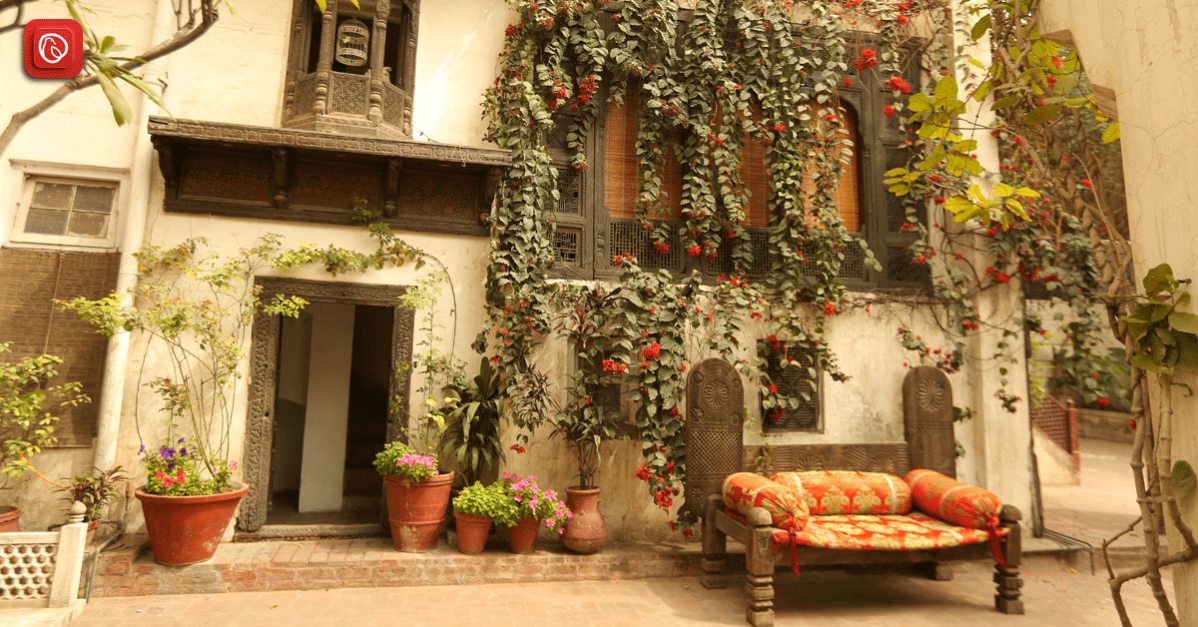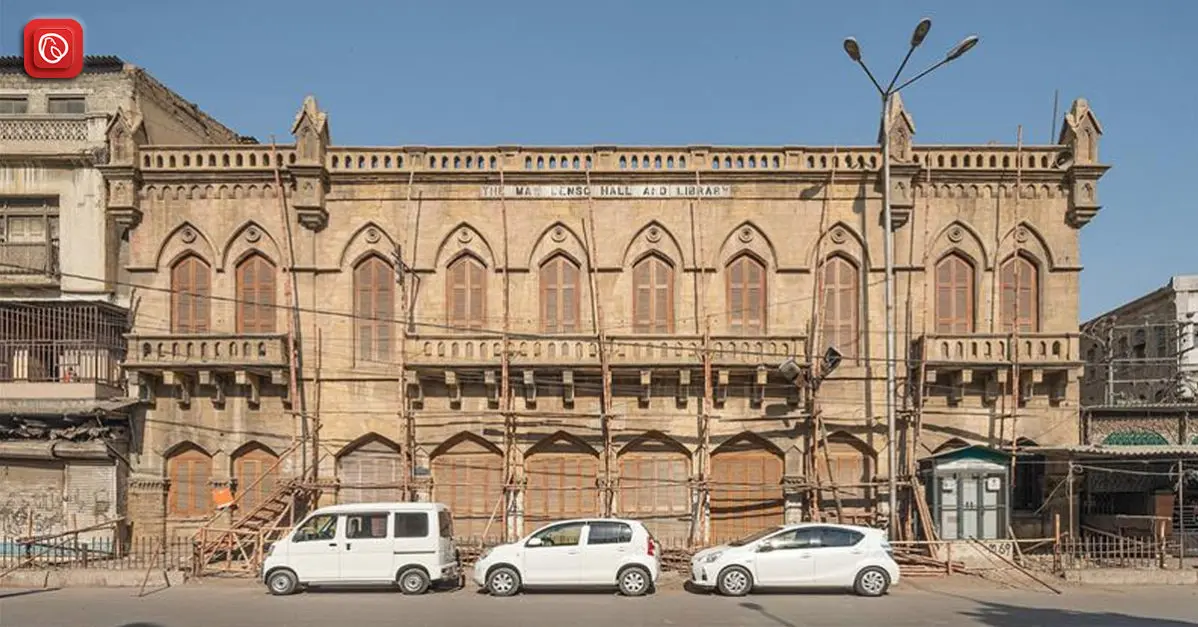Built-in the 18th century during the rule of the Sikh Empire, Haveli Barood Khana, now known as Mian Salli Haveli, stands as a historical gem in Lahore’s Walled City. Its foundations bear witness to the dynamic era when the Sikh rulers held sway over the region. Over time, this haveli has transformed beyond its architectural significance. It has evolved into a cultural symbol that resonates with the spirit and legacy of Lahore.
The custodian of this historical treasure is Mian Yousuf Salahuddin. He is a distinguished socialite and philanthropist hailing from Lahore. Mian Salahuddin has played a pivotal role in preserving the essence of this haveli. He has ensured that its historical integrity remains intact. Under his ownership, Mian Salli Haveli continues to stand as a testament to Lahore’s rich heritage. It is bridging the gap between the past and the present.
Graana.com has compiled a detailed blog about Haveli Barood Khana, highlighting its history, architecture, and history over time.
Haveli Barood Khana History

Haveli Barood Khana carries a historical legacy dating back to the 18th century during the Sikh rule of Lahore. Originally commissioned by a commanding general of the Sikh Army, the haveli played a dual role as both a residence and a strategic ammunition depot.
The haveli earned its distinctive name, “Barood Khana,” which translates to “ammunition depot,” owing to its crucial function during that period. It served as the principal storage facility for ammunition, strategically positioned facing the Lahore Fort This unique role not only showcased its military significance but also solidified its place in the cultural and historical narrative of Lahore.
Haveli Barood Khana in 19th Century

In the mid-19th century, Haveli Barood Khana transitioned into the possession of Mian Karim Buksh, marking the beginning of its association with the Salahuddin family. Acquired in the 1840s, the haveli became a witness to significant historical events, notably during the Pakistan independence movement, when it served as the residence of Mian Amiruddin, a key figure in the All-India Muslim League and the first Muslim Lord Mayor of Lahore.
The historical layers of Haveli Barood Khana extend beyond its military and political roles. The Haveli has been a silent spectator to the architectural modifications that occurred around 1901, which included the creation of a Zanan Khana (female quarter) and Mardan Khana (male quarter). The Sheesh Mahal within the haveli stands as a testament to the artistry of the time, adorned with intricate glasswork.
In the contemporary era, Yousuf Salahuddin, a notable socialite and philanthropist, assumed custodianship of Haveli Barood Khana, ensuring the preservation of its historical essence. Today, the haveli has transcended its historical roots to become a vibrant centre for cultural activities. Hosting events, and dignitaries, and continuing to be a symbol of Lahore’s rich heritage, Haveli Barood Khana stands as a living testament to the city’s enduring history.
Haveli Barood Khana Architecture

Beyond its marvellous history, Haveli Barood Khana is also an architectural treasure that bears witness to a bygone era. Its construction reveals a thoughtful design that seamlessly blends functionality with artistic finesse.
The most striking feature of Haveli Barood Khana is its roof, meticulously crafted from sturdy wooden planks. This architectural choice speaks to the craftsmanship of the builders and serves a practical purpose. This provides durability and resilience to the structure. Given the sweltering temperatures of Lahore, this design consideration becomes particularly significant.
The high ceilings within the haveli further contribute to its architectural brilliance. This deliberate choice aimed to combat the intense heat prevalent in Lahore. It creates a comfortable and airy living space. The design foresight in addressing the climatic conditions reflects a pragmatic approach that has stood the test of time.
Changes After 19th Century
Around 1901, Haveli Barood Khana underwent architectural modifications that added to its functional versatility. The division of the haveli into a Zanan Khana (female quarter) and Mardan Khana (male quarter) exemplifies an understanding of the social dynamics within the living space. This division allowed for distinct living areas. It helps in catering to the specific needs of each gender.
One of the crowning jewels of Haveli Barood Khana is the Sheesh Mahal, aptly named the “glass palace.” This room stands as a testament to the artistic flair prevalent during the Sikh era. Intricate glasswork adds an element of elegance to the haveli’s architecture. The Sheesh Mahal is the representation of the cultural richness embedded in the haveli’s history.
Delving into the Sikh era, Haveli Barood Khana showcases its devotion through the inclusion of a prayer room for the Sikh holy book, Granth Sahib. This sacred space signifies the religious diversity and tolerance prevalent during that period. The murals within the room, depicting a Sikh general engaged in battle against demons, further add a layer of historical and cultural depth.
Haveli Barood Khana Location
Haveli Barood Khana is strategically located in Lahore’s Walled City, directly facing the Lahore Fort and near the Taxali Gate. Its central location makes it easily accessible to key landmarks like the Shahi Mohalla Bazaar, Jamia Masjid Hanfia, the revered shrine of Pir Hazrat Baba Nauguzah, and the majestic Badshahi Mosque.
Barood Khana Haveli in Popular Culture

Beyond its historical significance, the haveli has become a cherished symbol of Lahore’s vibrant culture. This cultural icon has been a hub for diverse activities. It hosted traditional Basant festivals. It also welcomes esteemed guests, including royalty, presidents, politicians, and international dignitaries for different events.
Its grandeur extends to the silver screen, notably in the movie “Khuda Kay Liye,” where scenes were shot. It added a cinematic dimension to its cultural significance. The Pakistan Television Corporation utilised the haveli as a captivating location for its musical television series, “Virsa: Heritage Revived.”
This further underscore the haveli’s multi-faceted role as a backdrop for artistic expressions of the cultural identity of Lahore. Moreover, Barood Khana Haveli has been a witness to musical evenings, TV and movie shootings, and events. It has hosted prominent personalities from politics, acting, and music. Its walls echo with the melodies and conversations that have shaped Lahore’s cultural landscape over the years.
Allama Iqbal, Faiz Ahmed Faiz, M.Aslam, Dr.Taseer , Ismat Chughtai, Imran Khan are some of the names who graced this vicinity with their presence. The haveli’s cultural significance extends to its participation in the Basant festival in past, where it served as a central hub for festivities.
Journey through Lahore’s Other Remarkable Havelis
Beyond the historical charm of Haveli Barood Khana, Lahore is home to numerous other havelis that stand as silent witnesses to the city’s rich past. Each of these architectural gems contributes to Lahore’s diverse historical tapestry, reflecting the opulence and cultural nuances of bygone eras. The following are a few of these historical havelis in Lahore:
Haveli Asif Shah
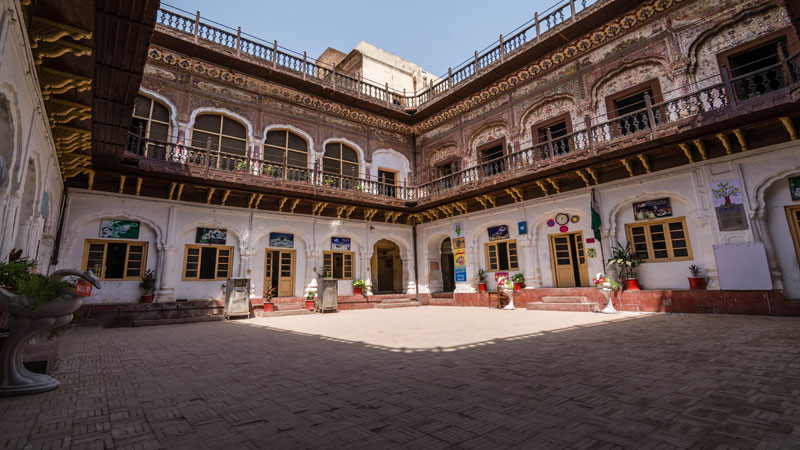
Situated at the end of Surjan Singh Street near Delhi Gate, the construction date of Haveli Asif Shah remains a mystery. Locals believe it belongs to the Mughal family, with stories of a family member marrying a Mughal princess and acquiring the haveli as dowry.
Haveli Khushal Singh
Once part of the reign of Sikh ruler Raja Ranjeet Singh, Haveli Khushal Singh has transformed into the esteemed ‘Fatima Jinnah College for Women.’ Its magnificent hallways, decorated courtyards, and lush gardens echo tales of a bygone era.
Haveli Raja Dhiyan Singh
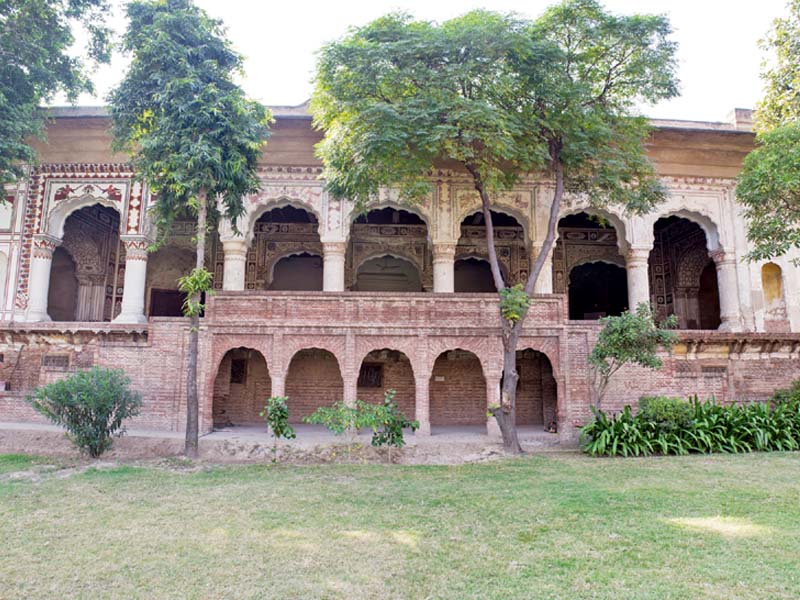
A relic from the Sikh era, Haveli Raja Dhiyan Singh is located near the red-zone area of old Lahore. While its premises have shrunk with time due to urbanisation, the haveli retains echoes of its glorious past.
Noorie Manzil / Noor Haveli
Dating back to the Mughal era, Noorie Manzil near ‘Chawk Matti’ is a 32-room haveli now serving as a residence for two landowners, preserving the charm of its historic origins.
Haveli Mian Sultan
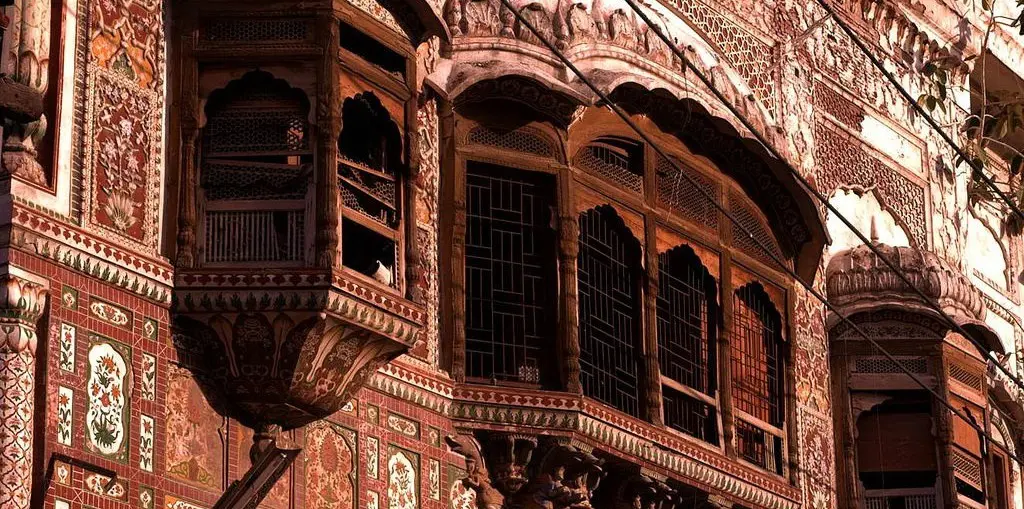
Once owned by a soap manufacturer and a renowned wrestler during Sikh rule, Haveli Mian Sultan near Delhi Gate narrates tales of a bygone era.
Haveli Qamar Manzil
Constructed in 1907 by Mir Qamar-ud-Din near the historical Bhatti Gate, Haveli Qamar Manzil currently houses six families. It embodies the essence of old Lahore.
Lal Haveli
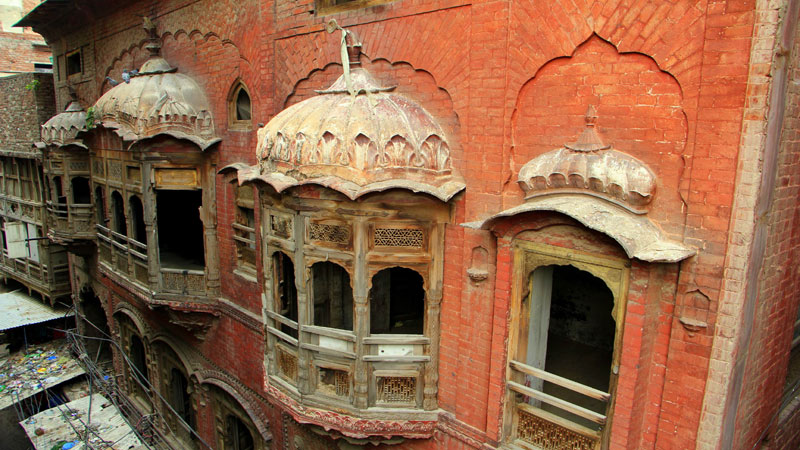
Approximately 150 years old, Lal Haveli near Lahori Gate showcases impressive red-brick architecture adorned with wooden windowpanes and intricate details, reflecting the British period.
Haveli Nau Nihal Singh/Victoria High School
Once the private residence of Nau Nihal Singh near Mori Gate, this haveli now serves as ‘Victoria Girl’s High School,’ displaying grand balconies, chambers, and halls.
Mubarak Haveli
Mubarak Haveli, inside Mochi Gate, safeguards centuries-old architecture. It witnessed the recovery of the renowned Koh-e-Noor diamond during Mughal Emperor Muhammad Shah’s reign.
Haveli Wajid Ali Shah
Belonging to the last nawab of Oudh, Wajid Ali Shah’s haveli, situated in Uttar Pradesh, showcases the nawab’s taste for art and music.
The Haveli of Baij Nath
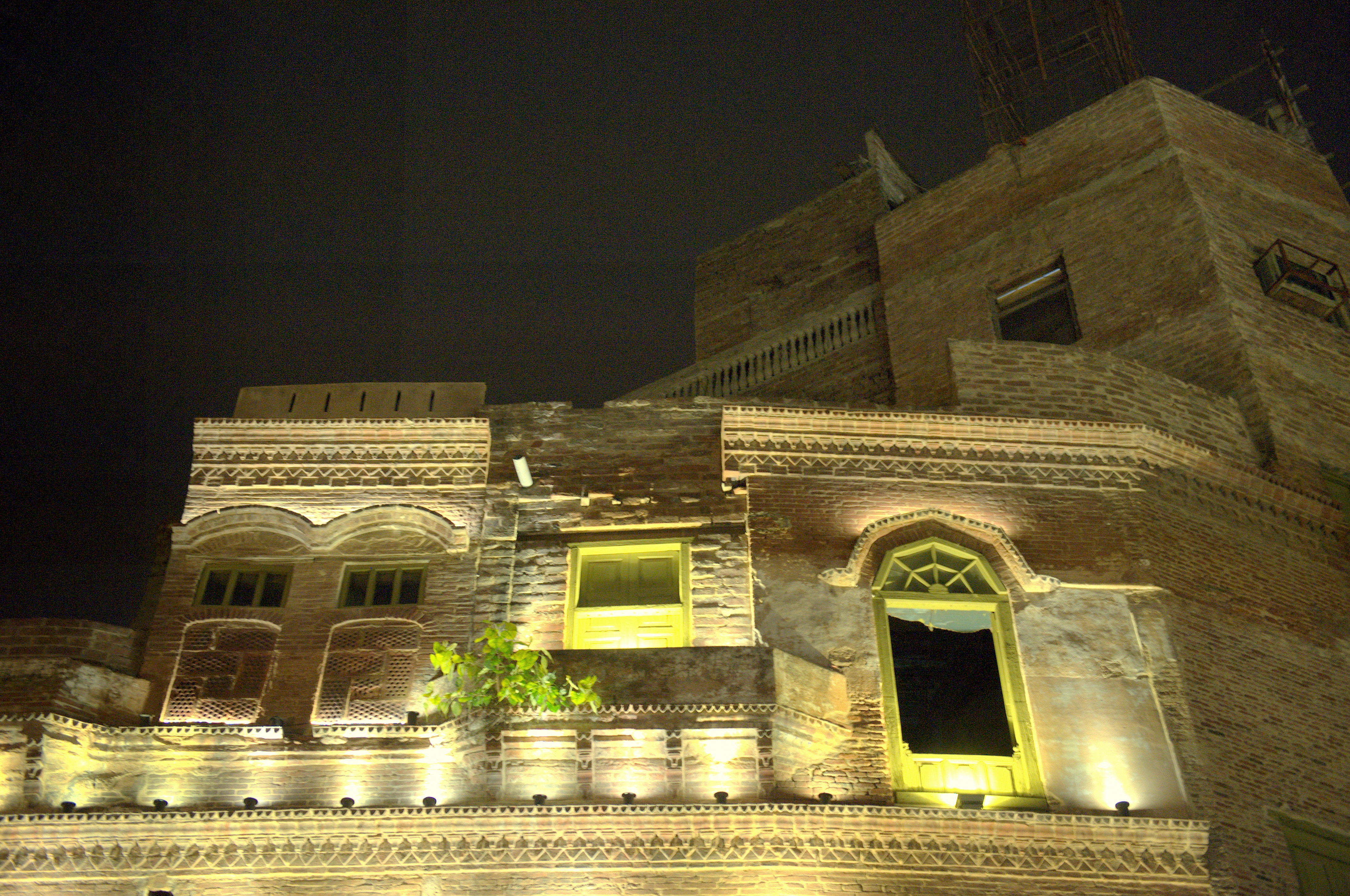
Situated near Delhi Gate, The Haveli of Baij Nath boasts a rich Hindu history with lofty rooms, spectacular gateways, a fountain, and a Hindu Temple. After the Pakistan-India partition, it housed 50 families before being sold.
Haveli Dina Nath
Named after the courtier of Sikh ruler Raja Ranjeet Singh, Haveli Dina Nath, now in Muslim hands, exemplifies Hindu/Sikh architecture, portraying the essence of a bygone era.
Haveli Mian Khan/Mission School
A colossal example of Mughal-era construction, Haveli Mian Khan near Shah Jahaan’s time stands as a testament to the architectural grandeur of that period.
FAQs about Haveli Barood Khana
The following are some of the most frequently asked questions about Haveli Barood Khana:
What is the significance of the “Mian Salli Haveli”?
Mian Salli Haveli holds significant importance in popular culture. It has been featured in the movie “Khuda Kay Liye” and served as a captivating backdrop for the Pakistan Television Corporation’s musical television series “Virsa: Heritage Revived,”. The show contributed to its cultural allure and recognition. It also hosts several major musical and cultural shows in Lahore.
How has Haveli Barood Khana contributed to Lahore’s cultural landscape?
The haveli has served as a venue for cultural festivities, hosting dignitaries, events, and featuring in movies and television series. This makes it a cherished symbol of Lahore’s cultural vibrancy.
What architectural features make Haveli Barood Khana unique?
The haveli boasts a roof made of sturdy wooden planks, high ceilings for comfort in Lahore’s heat, and a Sheesh Mahal with intricate glasswork. The architecture reflects both functionality and artistic finesse.
Who originally commissioned the construction of Haveli Barood Khana?
The haveli was commissioned by a commanding general of the Sikh Army during the Sikh rule of Lahore in the 18th century.
How has the haveli evolved over time?
Originally an ammunition depot, it transitioned into a residence and underwent architectural modifications in 1901. They include the creation of separate living quarters.
Are there other notable havelis in Lahore besides Haveli Barood Khana?
Yes, Lahore is home to several other historical havelis, each with its unique history, architecture, and cultural significance. Some notable examples include Haveli Nau Nihal Singh, Mubarak Haveli, and Haveli Qamar Manzil.
For more details and information, visit the Graana Blog.
